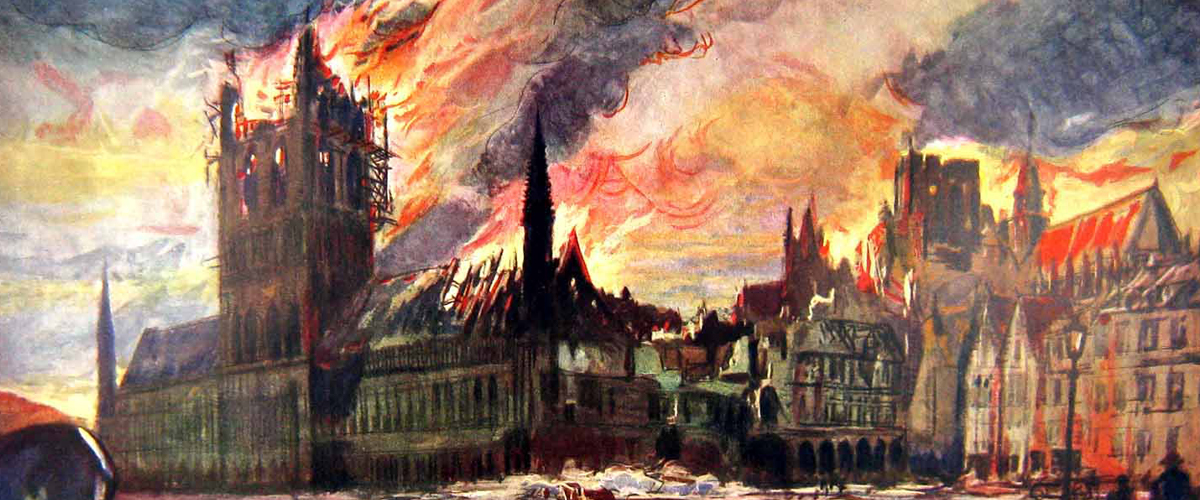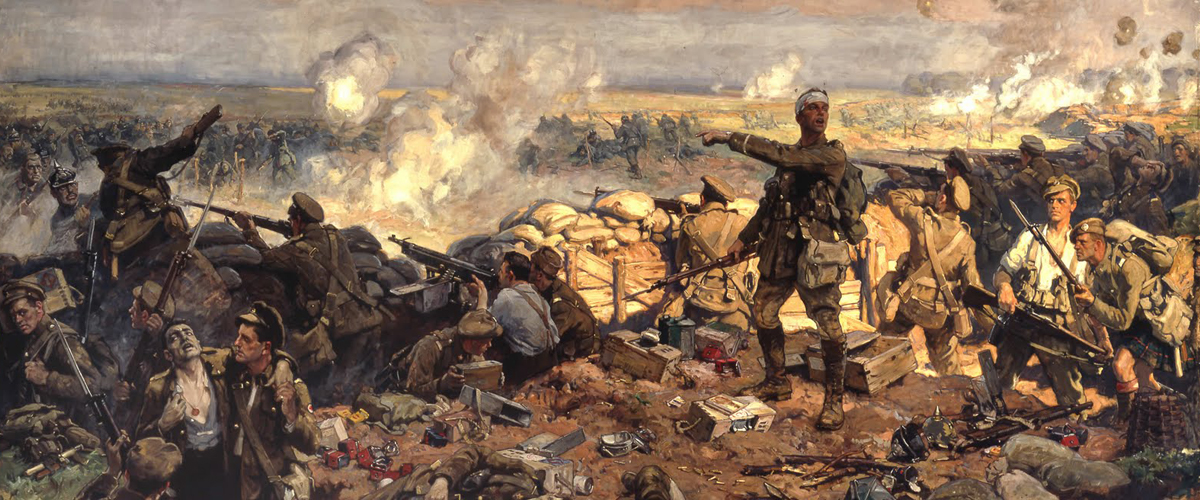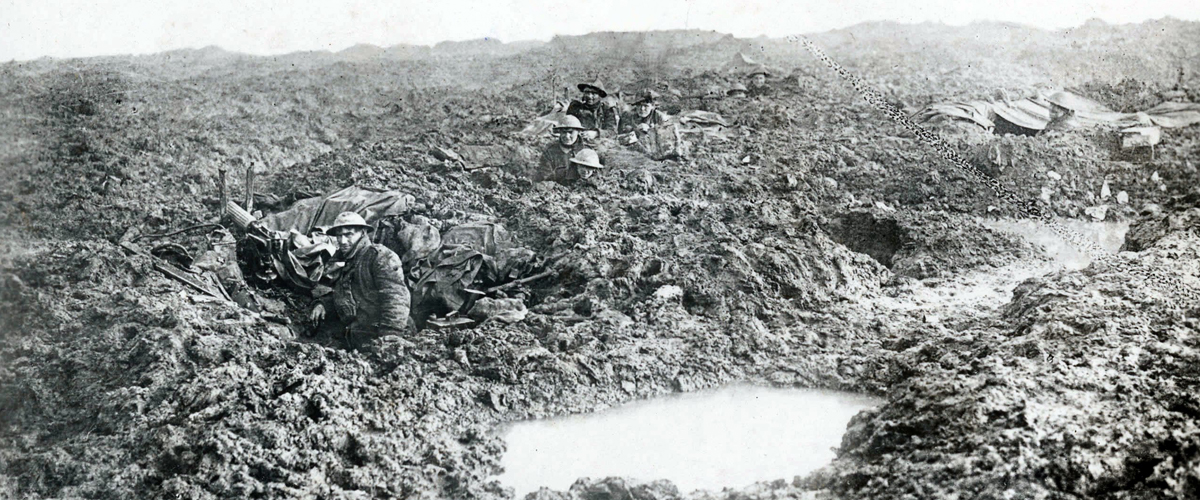
First Battle of Ypres
As a result of a series of attacks for which the German army command use the pick of their forces, several fierce battles are being fought at: Messines from October 12th, Langemark (October 21st -24th), Geluveld (October29,30, 31), Nonnenbossen, east of Hooghe (November 11th). When on November 22nd a relative lull sets in, the Germans find themselves very near the town. At the time the firing line runs along Bikschote, Langemark, Poelkapelle, east of Zonnebeke, Saint Eloi, Wijtschate, east of Wulvergem...
Not only had the British put up an heroic defense of the town but they had also frustrated the enemy's attempt to break through to the Channel. How deadly the battles were is revealed by the number of dead, missing and wounded among the British defenders: 58.155.
During the winter that follows a relative calm prevails in the Ypres sector. Nevertheless on November 22nd long range guns and howitzers shell Ypres, inflicting serious damage on its historical monuments and set the cloth hall and belfry ablaze. It marks the beginning of the agony of Ypres that was to endure for four years.


